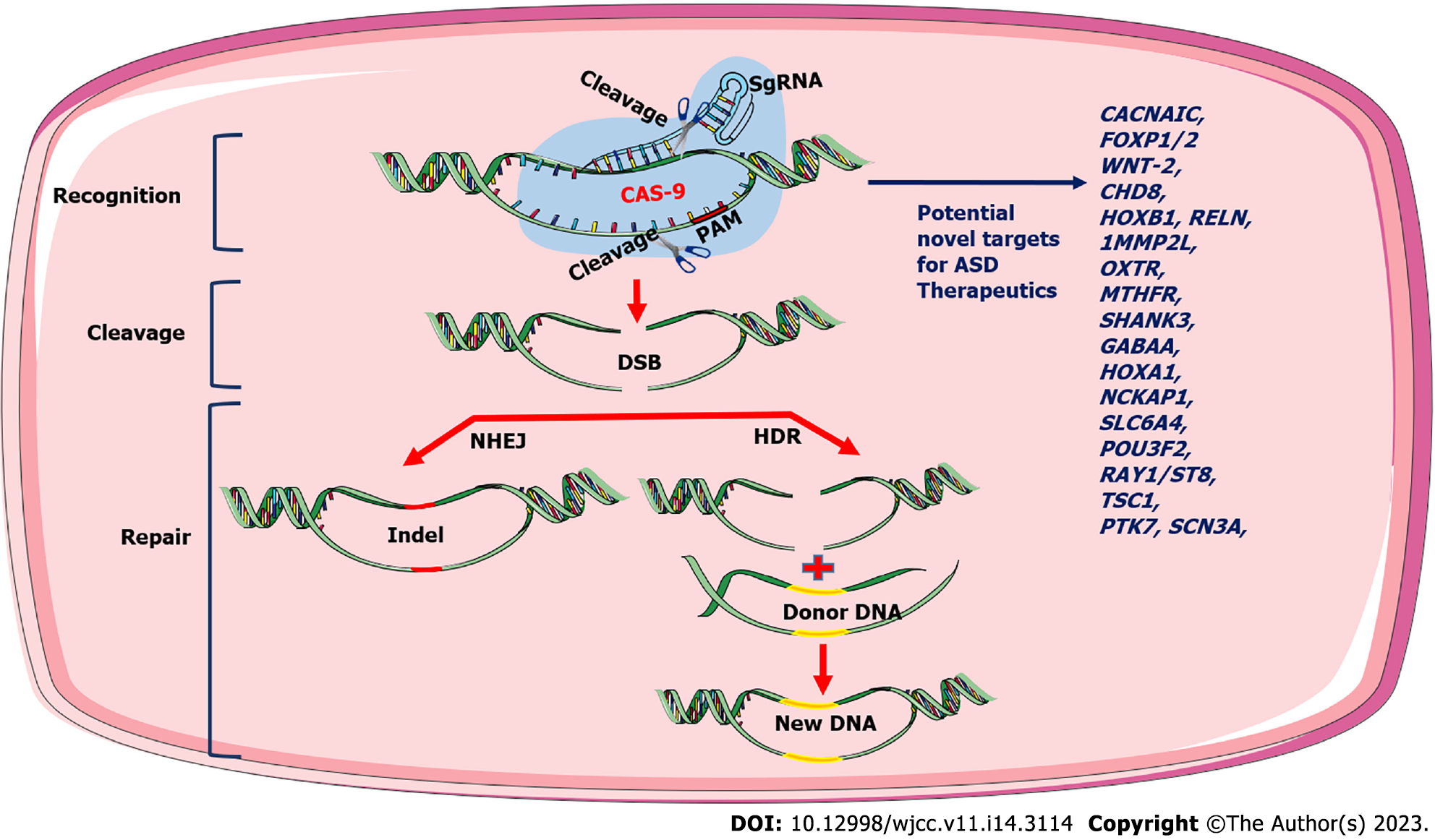Copyright
©The Author(s) 2023.
World J Clin Cases. May 16, 2023; 11(14): 3114-3127
Published online May 16, 2023. doi: 10.12998/wjcc.v11.i14.3114
Published online May 16, 2023. doi: 10.12998/wjcc.v11.i14.3114
Figure 1 Schematic diagram describing the structure and functioning of clustered regularly interspaced short palindromic repeats-associated protein 9 technique in autism spectrum disorder.
In this schematic, we highlighted the mechanism of clustered regularly interspaced short palindromic repeats (CRISPR)-associated protein 9 (Cas9) in recognizing a target using protospacer adjacent motifs sequencing and causing cut at specific point. Following cleavage and forming double stand breaks, repair systems like non-homologous end joining and homology directed repair come into play for avoiding any unspecific mutations. Diverse application of CRISPR-Cas9 has been explained in this diagram for investigating the mechanism involved in autism spectrum disorder pathophysiology. Various potential therapeutic targets for autism spectrum disorder could be investigated using CRISPR-Cas9 technology. sgRNA: Single guide RNA; ASD: Autism spectrum disorder; PAM: Protospacer adjacent motifs; DSB: Double strand breaks; NHEJ: Non-homologous end joining; HDR: Homology directed repair.
- Citation: Sandhu A, Kumar A, Rawat K, Gautam V, Sharma A, Saha L. Modernising autism spectrum disorder model engineering and treatment via CRISPR-Cas9: A gene reprogramming approach. World J Clin Cases 2023; 11(14): 3114-3127
- URL: https://www.wjgnet.com/2307-8960/full/v11/i14/3114.htm
- DOI: https://dx.doi.org/10.12998/wjcc.v11.i14.3114









